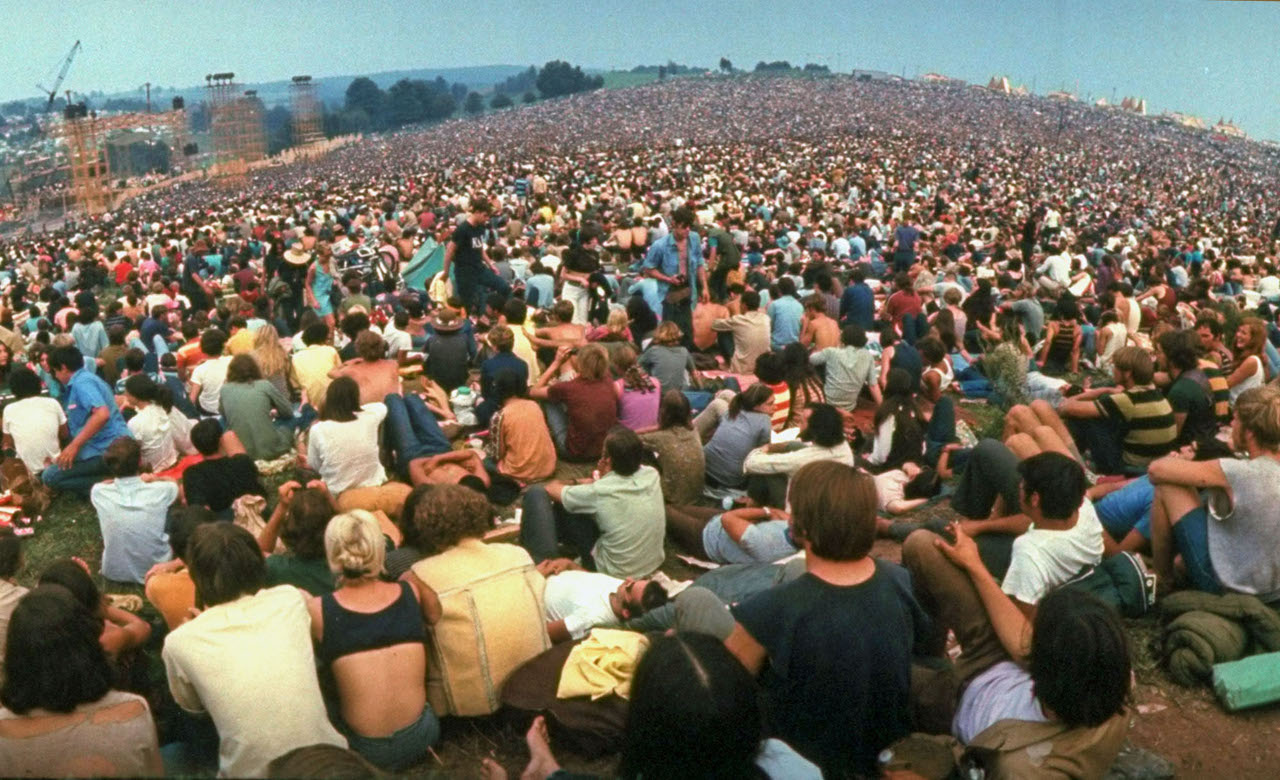Woodstock is one of the most iconic music festivals of all time. The festival was a kind of a turning point in music history, because it was the first to popularize a style known as rock ‘n’ roll. It also introduced bands like Jimi Hendrix and Janis Joplin, who went on to become legends. This article explores how the festival came to be and its lasting impact on the music world today.

Photo by John Dominis
Origins
The Woodstock Music Festival was held in Bethel, New York from August 15-18, 1969. The festival was originally planned as a three-day concert to celebrate the end of the 1960s and the counterculture movement.
The festival was organized by four young men: John Roberts, Joel Rosenman, Artie Kornfeld, and Michael Lang. Roberts and Rosenman were wealthy young men who had recently started their own company. Kornfeld was a music producer who had recently worked with the group The Beatles. Lang was a young concert promoter who had organized several small music festivals.
The four men managed to secure financing for the festival and began to plan the event. They chose the town of Bethel because it was a rural area with plenty of open space. They also booked some of the biggest names in music at the time, including Joan Baez, Crosby, Stills, Nash & Young, and Jimi Hendrix.
The Woodstock Music Festival was an incredible success. Over 400,000 people attended the event, making it one of the largest music festivals in history. The festival came to symbolize the peace and love of the 1960s counterculture movement.
Festival Day 1
The first day of the Woodstock Music Festival began with a lineup of some of the most popular and talented musicians of the time. The crowd was large and excited, and the music was nonstop. There were some technical difficulties throughout the day, but overall, the festival was a success.
The headliners on Day 1 included Richie Havens, Arlo Guthrie, Joan Baez, and Crosby, Stills, Nash & Young. These artists performed for hours, and the crowd sang along and danced throughout their sets.
Despite the hot weather, everyone had a great time on the first day of the festival. It was clear that this event was going to be something special and unforgettable.
Festival Day 2
The second day of the Woodstock Music Festival was just as eventful as the first. Over 500,000 people had converged on the small town of Bethel, New York, and the crowds were still swelling.
The lineup for the second day included some of the biggest names in music, including The Who, Crosby, Stills, Nash & Young, Jefferson Airplane, and Sly and the Family Stone.
Despite the large crowds, there were few problems reported. The main stage had to be moved to accommodate the growing crowds, but otherwise, everything ran smoothly.
The weather was warm and sunny, and the music was non-stop. As night fell, the crowd began to thin out a bit, but there were still plenty of people around to enjoy the music.
All in all, it was another successful day at Woodstock. Despite the huge crowds, everything went off without a hitch. The music was great, and everyone seemed to be having a good time.
Festival Day 3
On the third day of the Woodstock Music and Art Fair, the crowd had swelled to an estimated 400,000. With so many people, food and water were in short supply, and sanitation became a problem. Still, the music played on, with performances by Crosby, Stills & Nash, Joe Cocker, Country Joe & The Fish, and Ten Years After. Despite the challenges, the vast majority of people at Woodstock reported having a positive experience.




![From Jimi Hendrix The Star Spangled Banner National Anthem Live at Woodstock 1969 Gallery Jimi Hendrix - The Star Spangled Banner [ National Anthem ] ( Live at Woodstock 1969 )](https://i.ytimg.com/vi/sjzZh6-h9fM/mqdefault.jpg)

Final Thoughts
The Woodstock Music Festival was a three-day concert event that took place in August of 1969. Over 400,000 people attended the festival, which featured performances by some of the most popular musicians of the time. The Woodstock Music Festival is widely considered to be one of the most important events in music history.
The festival was originally slated to take place in another town, but due to permit issues, it was moved to the town of Bethel, New York. The move proved to be a good decision, as Bethel became synonymous with the Woodstock Music Festival.
Despite the large number of people in attendance, the festival was relatively peaceful. There were some instances of vandalism and theft, but overall, the event was calm. This was likely due to the fact that many of the attendees were young hippies who were advocating for peace and love.
The Woodstock Music Festival is an important part of music history. It was a three-day event that featured some of the most popular musicians of the time. Despite the large number of people in attendance, the festival was relatively peaceful. The Woodstock Music Festival is an important symbol of the 1960s counterculture movement. true